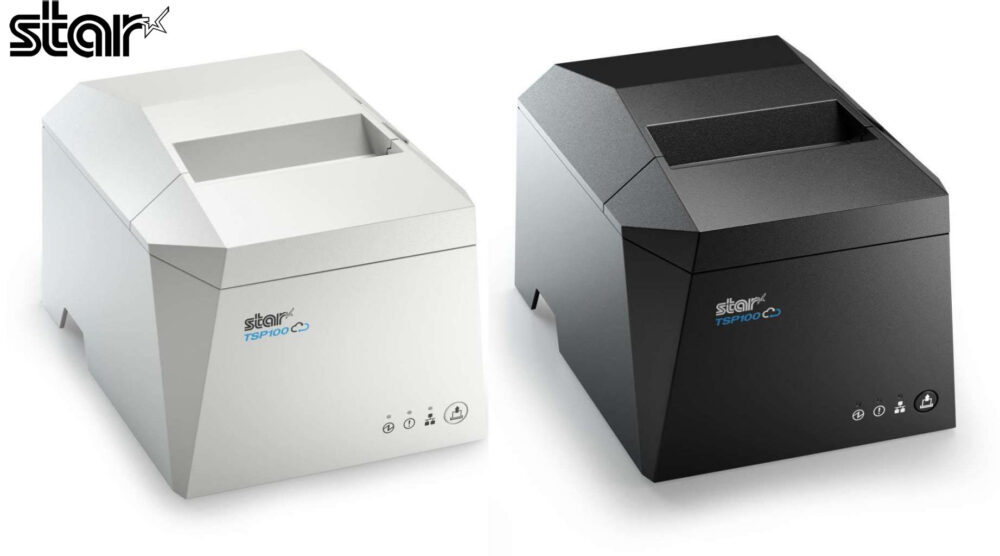High Wycombe, UK, 8 March 2022 International POS printer manufacturer Star Micronics announces the launch of its TSP100IV POS printer. Designed for PC POS in retail and hospitality as well as tablet and cloud POS applications, this latest model in Star’s TSP100 series features multiple interfaces along with integrated Star CloudPRNT™ technology for printing directly from online ordering platforms and websites. It also benefits from Android Open Accessory (AOA) support for direct communication and charging with compatible Android devices.
With 2.5 million units sold to date worldwide, the TSP100 series is one of Star’s most established printer ranges. The new TSP100IV brings a unique design alongside enhanced connectivity and specialist printing features for the very latest in cloud and tablet POS.
Offering a plug and play solution with internal power supply, the TSP100IV can act as an immediate plug-in replacement for other TSP100 models. However, unlike previous TSP100 single interface models, the new TSP143IV UE model features multi-connectivity on one model with Ethernet and USB-C port for Windows, Linux and MacOS devices as well as a USB-A port for direct cabled ‘data & charge’ for USB-C and MicroUSB based Android tablets and mobile devices.
Android Open Accessory (AOA) support enables direct data and charging for supported Android tablets and mobile devices or connected peripherals if using the printer hub. Providing even greater flexibility, the TSP100IV can be connected over Wireless LAN using Star’s compact MCW10 Wireless LAN module.
For direct printing from online ordering platforms and web sites to connected Star printers anywhere in the world, Star’s unique CloudPRNT technology is built in to the TSP100IV. As a result, it is ideal for printing retail Click & Collect orders or restaurant orders direct to the kitchen without the need for a local tablet or POS system.
While CloudPRNT is already used by retail and hospitality establishments worldwide as part of an online ordering platform or e-commerce solution, Star has recently introduced StarPrinter.online, a fully managed service for retail and hospitality businesses to manage the printer estate with minimal set-up time and cost as well as near zero integration. If required, customers can simply send a receipt or an order as an html file or even an email directly to the printer.
With a 250mm/s print speed and support for 85 µm down to 49 µm thin paper for clients who wish to use more cost-effective paper rolls, its compact angular design represents a space-saving solution thanks to its reduced height and depth in comparison to previous TSP100 models. Offering a range of integrated features including wall mount keyways, cable strain relief to protect from mains or USB disconnection, buzzer mount as well as space for the optional Star MCW10 Wireless LAN module, the TSP100IV boasts optimal versatility and ergonomic design. With everything included at purchase – power cable, interface cables and paper guide, as well as a 4-year warranty as standard the TSP100IV offers exceptional functionality and reliability.
For any application, the TSP100IV provides incredibly straightforward printer setup with powerful Star Windows Software and an intuitive Star Quick Setup Utility for iOS and Android while, for developers, Star’s new StarXpand™ SDK offers simple cross platform integration for environments such as React Native. SMCS (Star Micronics Cloud Services) is also included providing effective support for remote device management.
As Simon Martin, Director & General Manager, Star Micronics EMEA, states: “As the latest model in the established TSP100 series, the TSP100IV builds on the success of this range to provide an entry-level printer with enhanced functionality and outstanding reliability. The TSP100IV expertly meets the demands of omnichannel commerce for retail and hospitality.”
